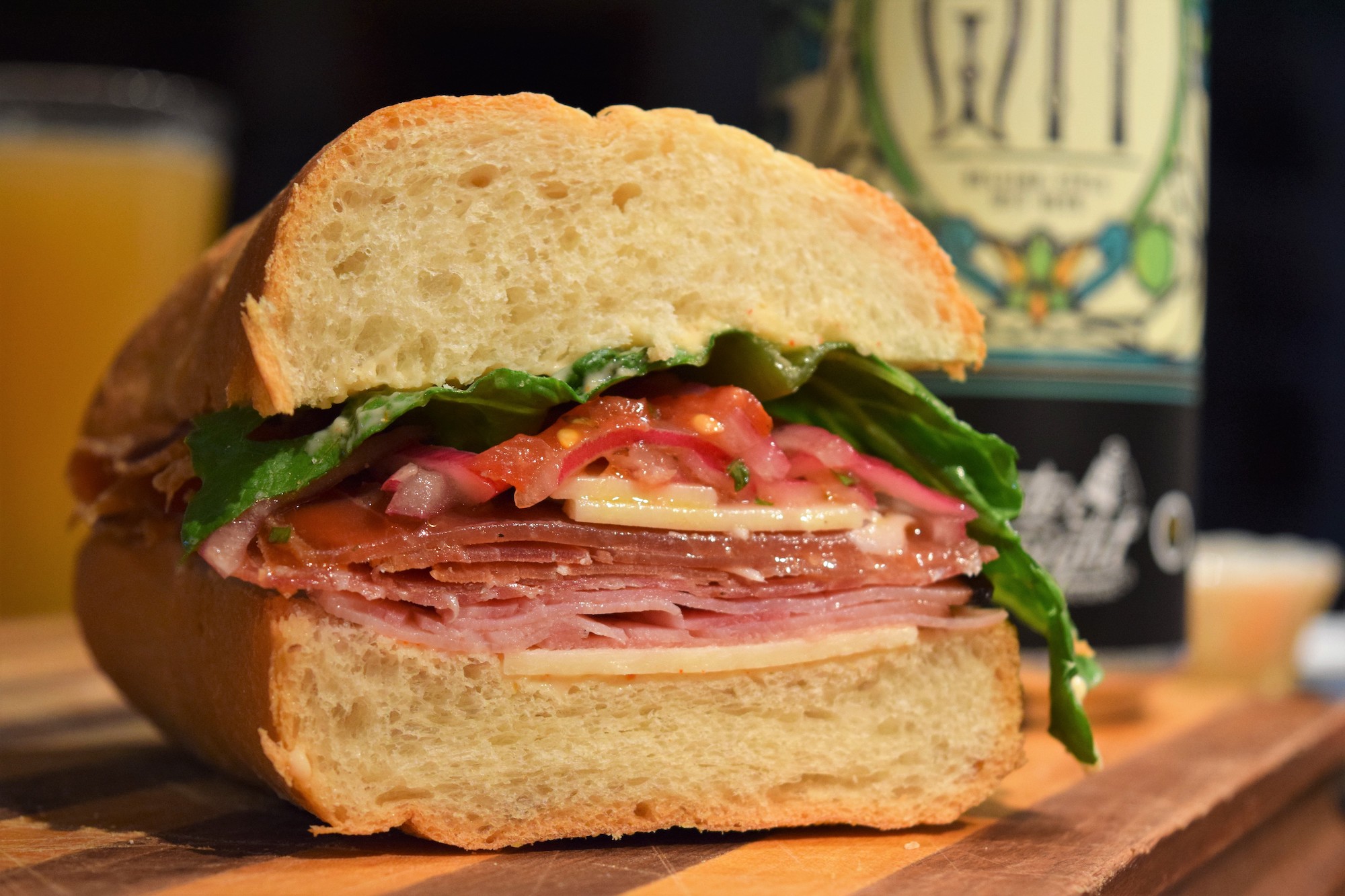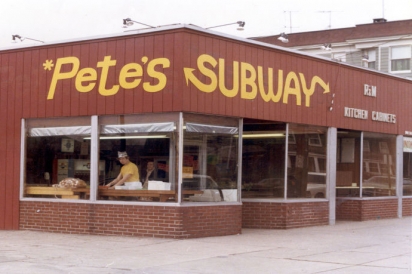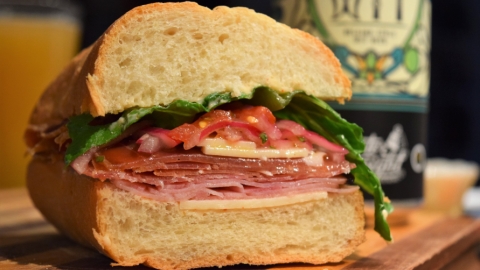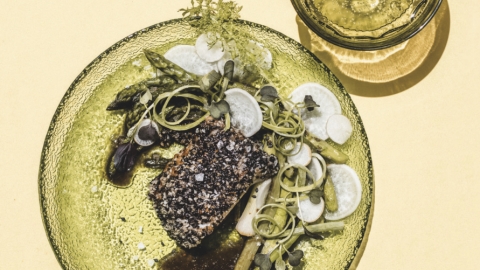Connecticut Grinds out the Submarine Sandwich
In 1965, 17-year-old Fred De Luca of Bridgeport opened a sandwich shop, “Pete’s Submarines.” Later, he changed the name to “Pete’s Subway” and finally dropped the “Pete,” before expanding to over 100 countries and 45,000 franchise locations. As they spread, the iconic submarine sandwiches that headlined the shop’s offerings were called different things by the locals of each region, like “heroes,” “hoagies,” or “spuckies.” After all, he was hardly the first person to slap meat and cheese between two halves of a chewy loaf of bread.
In fact, Fred De Luca’s iconic “submarine sandwich” goes back much farther in our own Connecticut history, to a man named Benedetto “Benny” Capaldo. He arrived in New London from Italy in 1913 and opened a grocery store at 18 Shaw Street, serving supplies and food to a hungry neighborhood. By the 1920s, he had begun to serve salami and provolone sandwiches on long, olive-oiled bread, adding peppers and onions, tomatoes, and lettuce. Coast Guard cadets, dockworkers, and sailors were among his best customers, and this submarine-shaped sandwich naturally spread across the harbor to the Groton submarine base and to bases and seaports around the east coast. During World War II, the commissary at the base ordered hundreds from Benny each day, and his competitors were making them throughout New London, as well as throughout America.
There are disputes about this origin story, as there are about all such stories. One counter-claim states that Dominic Conti created the first “submarine sandwich” in Paterson, New Jersey, as early as 1910, inspired by an old-fashioned undersea vessel he saw in the local museum. Portland, Maine, also claims to be the birthplace of a similar Italian-American sandwich, going back even farther, to 1899, and scoffing at the “submarine” pretenders.
Finally, articles in publications that range from Bon Appetit to Wikipedia challenge Connecticut’s claim to the genesis of the Italian sub, citing that the Oxford English Dictionary first notes the term “submarine sandwich,” in print in 1940 in Wilmington, Delaware, prior to U.S. involvement in World War II. Since America did not become officially involved in the war until 1941, it seems assumed that submarines must not yet have been on the minds of Nutmeggers, but this line of thinking ignores the fact that Benny Capaldo was making those sandwiches for over a decade at that point, and that the Groton submarine base (along with attendant hungry submariners) was chugging along nicely throughout that period. So although Italian immigrants were no doubt building similar sandwiches throughout the east, it is likely that the term “sub,” at least, comes from Connecticut. As the second-most Italian-American state after Rhode Island (sorry, New Jersey), Connecticut should be proud of these rich traditions and heritage, which go well beyond New Haven pizza.
These days, one of our most popular sub shops is Nardelli’s, with a dozen locations throughout central and western Connecticut. Established in 1922 on Waterbury’s South Main Street, this deli soon began serving a combination of an Italian submarine sandwich and a New York “grinder,” and the New York name stuck. They are not alone. Most people in the state today prefer the term “grinder,” with a few in the southwest corner using “wedge.” And all the terms, including sub, are just as often used for tuna salad or eggplant sandwiches as they are for the original.
Whatever we call these iconic sandwiches, most of us get them at Subway, Nardelli’s, or our local deli and don’t think to make them at home, but nothing could be easier. The key is to buy quality Italian meat, cheese, and fresh bread. Then, save a little time to marinate and mix and pay attention to color, texture, and flavor combinations. For example, at our house, we choose Asiago cheese, because it is creamy and mild, providing a nice balance to salty cured meats. We also enjoy adding spicy mayonnaise rather than salad dressing, because the marinated vegetables provide plenty of bite. Eric likes more meat; Amy likes more heat and crunch.











